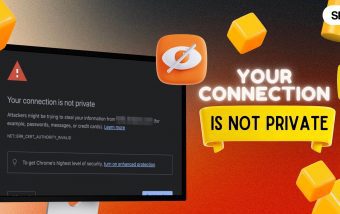How To Know If Someone Blocked You On iMessage? 5 Secret Hacks!
Apr 16, 2025

Apr 16, 2025

Apr 16, 2025

Apr 15, 2025

Apr 11, 2025

Apr 11, 2025

Apr 11, 2025

Apr 08, 2025

Mar 29, 2025
Sorry, but nothing matched your search "". Please try again with some different keywords.


According to a new statewide survey by USC and the California Emerging Technology Fund, California has achieved a digital milestone. It has enabled nearly 91% of households to have high-speed internet access. This is a rise from the 88% stated in the Statewide Survey on Broadband Adoption For Living In California, conducted every two years, in 2019.
Additionally, a smaller percentage of families use smartphones, with around 85% of inhabitants accessing the internet on a desktop, laptop, or tablet.
Researchers and policy analysts consider households linked via smartphones as “under-connected” due to their limited capabilities.
You can find the best stores in California online and get all services and education from the comfort of your home.
Furthermore, with federal and state funding, California has a unique opportunity to bridge the digital divide, allowing families to access high-speed internet.
However, the real question is, how does this internet connectivity help Californian citizens in their daily lives?
Let us explore the digital advancements and their benefits when you decide to live in California!
Given below are the different sectors of influenced by the heavy digitization in California—

To combat the digital gap, the California Department of Education (CDE) equips young students with digital knowledge. Therefore, they help students learn the use of digital tools that help them engage in the digital world responsibly and safely.
Moreover, in 2023, the CDE gave more than 4,000 smartphones to kids and families in collaboration with neighborhood-based groups.
Schools in California also support digital inclusion, literacy, learning, and employment solutions. Thus, they focus on underserved, under-represented, and low-income communities using the power of the Internet.
For instance, in 2023, the CDE donated over $3.5 million to California nonprofit organizations. This included $1.6 million for digital literacy training and resources.
Also, the CDE collaborates with educators and families to raise awareness and foster positive learning environments.
Between 2011 and 2012, online shopping grew by 27.4% in California, primarily due to customers purchasing necessities like food, gadgets, clothes, and home goods online.
This change offers businesses a special chance to increase online visibility and attract customers.
Furthermore, firms hoping to increase online sales have more discretionary cash because of California’s robust economy, which has a GDP of over $3 trillion.
With these digitization standards, businesses can target various demographic groups and customize their marketing approaches. Thus, e-retail services reach the diversified population of California.
Furthermore, the state’s infrastructure and logistics network include major ports like Los Angeles and Long Beach. This facilitates efficient import and distribution of goods, ensuring timely fulfillment and a seamless shopping experience.

California’s Governor Gavin Newsom’s Broadband for All Plan aims to connect more people, schools, and businesses to the Internet.
The plan aims to provide high-performance broadband to all Californians, increase service reliability, and connect all residents by 2030.
Moreover, it provides affordable broadband and necessary devices, eliminates cost barriers by 2026, and reduces smartphone reliance.
The plan also aims to enroll more people in the federal Affordable Connectivity Program.
Residents with low incomes, senior citizens, and those living in rural areas are among the eight groups for which the digital equity proposal sets barriers.
85% of Californians, or around 33.5 million people, fit into one or more categories. The initiative seeks to increase employment in technology and internet infrastructure.
AT&T has organized almost 100 digital literacy workshops throughout the state to help newly connected parents and families build the skills and confidence they need to support online learning and engagement.
In South Los Angeles, notable organizations held Spanish-language digital literacy sessions for the community.
These live community seminars provide fundamental skills related to digital literacy. They teach computer and mobile device usage in their courses.
Additionally, it offers tutorials on widely used applications, including email, video conferencing, and search engines.
They also teach how to stay safe online and avoid scams and fraud.
California, a major US state, faces significant health disparities due to its diverse population and socioeconomic status.
Moreover, the COVID-19 pandemic has highlighted the potential of digital health modalities as game-changing solutions. It has provided the following benefits:
These modalities are more than just digital tools; they are potential equalizers in healthcare, ensuring that patients in different regions have the same care opportunities.
Furthermore, health equity provides an equitable and just chance to achieve optimal health.
Injustices from the past and present are the causes of health inequalities, which include diabetes, hypertension, and heart disease.
California has notable differences in life expectancy, healthcare quality, and accessibility to basic medical services among specific racial and ethnic groupings.
Digital modalities like telehealth and eConsults can help bridge these barriers, provided they are designed, developed, tested, deployed, and evaluated for equitable access.

Technology is transforming how real estate transactions are conducted in California. With agents and hotel brokers embracing Proptech solutions, this living sector is streamlined, enhancing the transaction experience.
Digital marketing strategies are being used by real estate agents and hotel brokers to market properties effectively, while virtual tours and augmented reality are transforming property showcases.
Data-driven decision-making guides pricing strategies, investment recommendations, and business decisions by analyzing market trends, property values, and buyer preferences.
Also, transaction management platforms help citizens buy and sell faster. Thus, it allows agents and brokers to manage documents, track progress, and communicate with all parties involved.
Online property portals have revolutionized property searches. On the other hand, it allows buyers to explore listings, filter preferences, and receive personalized recommendations. Real estate agents and brokers optimize listings for visibility on these platforms.
The Californian state dedicates mindful thoughts to innovate, fostering a culture of continuous exploration and adopting better service delivery methods.
This includes technology, processes, systems, and partnerships.
The State’s digital transformation efforts focus on meeting Californians’ needs, experiences, and contexts.
Moreover, it involves designing intuitive, user-friendly, and responsive technology solutions. Californians should be involved in the design process, and their feedback should be considered in any technology operations plan.
The State is committed to fostering productive partnerships with other departments, leveraging collective expertise and resources for a successful digital transformation.
Read Also:
Ankita Tripathy loves to write about food and the Hallyu Wave in particular. During her free time, she enjoys looking at the sky or reading books while sipping a cup of hot coffee. Her favourite niches are food, music, lifestyle, travel, and Korean Pop music and drama.
View all Posts
How To Know If Someone Blocked You On iMessag...
Apr 16, 2025
7 Website Design Mistakes That Are Hurting Yo...
Apr 16, 2025
Programmable Dynamic SEO for Location-Based P...
Apr 15, 2025
Google Boba Game: How To Play This Fun Game B...
Apr 11, 2025
Which Is The Best Video Search Engine Of 2025...
Apr 11, 2025

